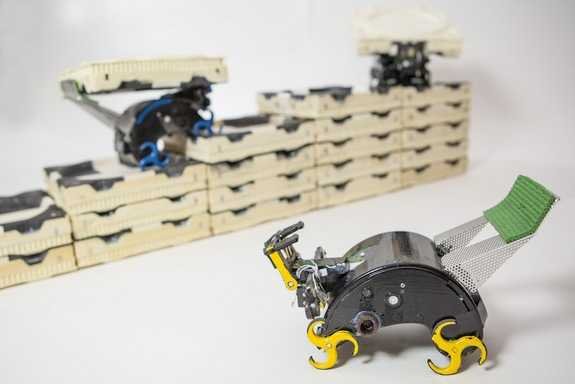American researchers at Harvard University have created an army of tiny autonomous robots that mimic the termite behavior and can build on themselves with no human interference entire brick castles.
It is the first time that robot "builders", without even being programmed in advance, to have knowledge of the overall design of the construction, construct with self-organization and impressively edifying buildings. Perhaps it is a foretaste of the robotic future of buildings, which can be based on intelligence - and in the style of insects! It is a logic that overthrows the established millennium of human construction, based on a hierarchy led by the architect and civil engineer.
The researchers, led by Dr. Justin Werfel of the Institute of Biological Inspired Engineering Wyss, who made the relevant publication in the magazine "Science,” as well as an announcement at the annual conference of the American Association for the Advancement of Science (AAAS), according to the with the BBC, the "Nature" and "New Scientist"They said that the decentralized logic of their robots has significant advantages, for example for missions in dangerous environments, such as natural disaster zones or space. For example, if one robot is damaged or damaged, the others can continue their work normally.
"We could use such robots in flooded areas to build dams with sandbags on their own," said Werfel, whose artificial termites were developed as part of the wider program. TERMS of Harvard. U.S.A. researchers have developed special algorithms inspired by how armies of millions of independent termites, despite their tiny brains, work together to build their theorizing nests without a leading central mind telling them what to do.
Each of the robot-termites has a length of 18, looks like a small Volkswagen beetle and has four simple types of sensors (infrared, ultrasonic, touch and acceleration). Everyone understands with their sensors only the neighboring robots and the surrounding environment, building around it.
Each robot is provided with simple instructions and simply acts (and reacts) depending on what he encounters around him, without being scheduled to do anything specific. However, in cooperation with the others, although everything is moving very slowly, it finally results in an impressive construction.
Robotic termites can move back and forth on the right, climb and descend stairs, lift, carry and place bricks without the guidance of any foreman or engineer.
Should the people involved in the construction industry be concerned?
News Room «Profit»With information from RES - AMP






